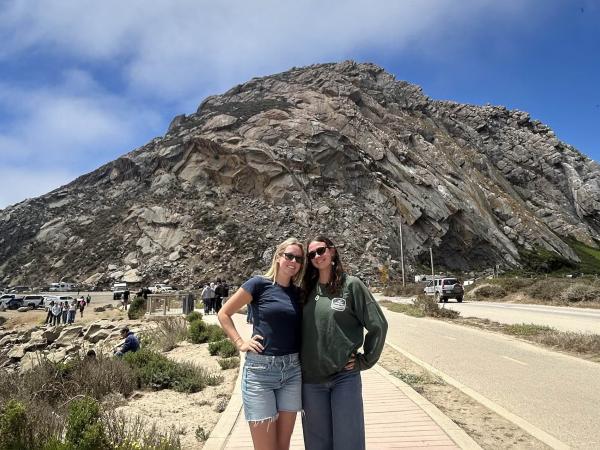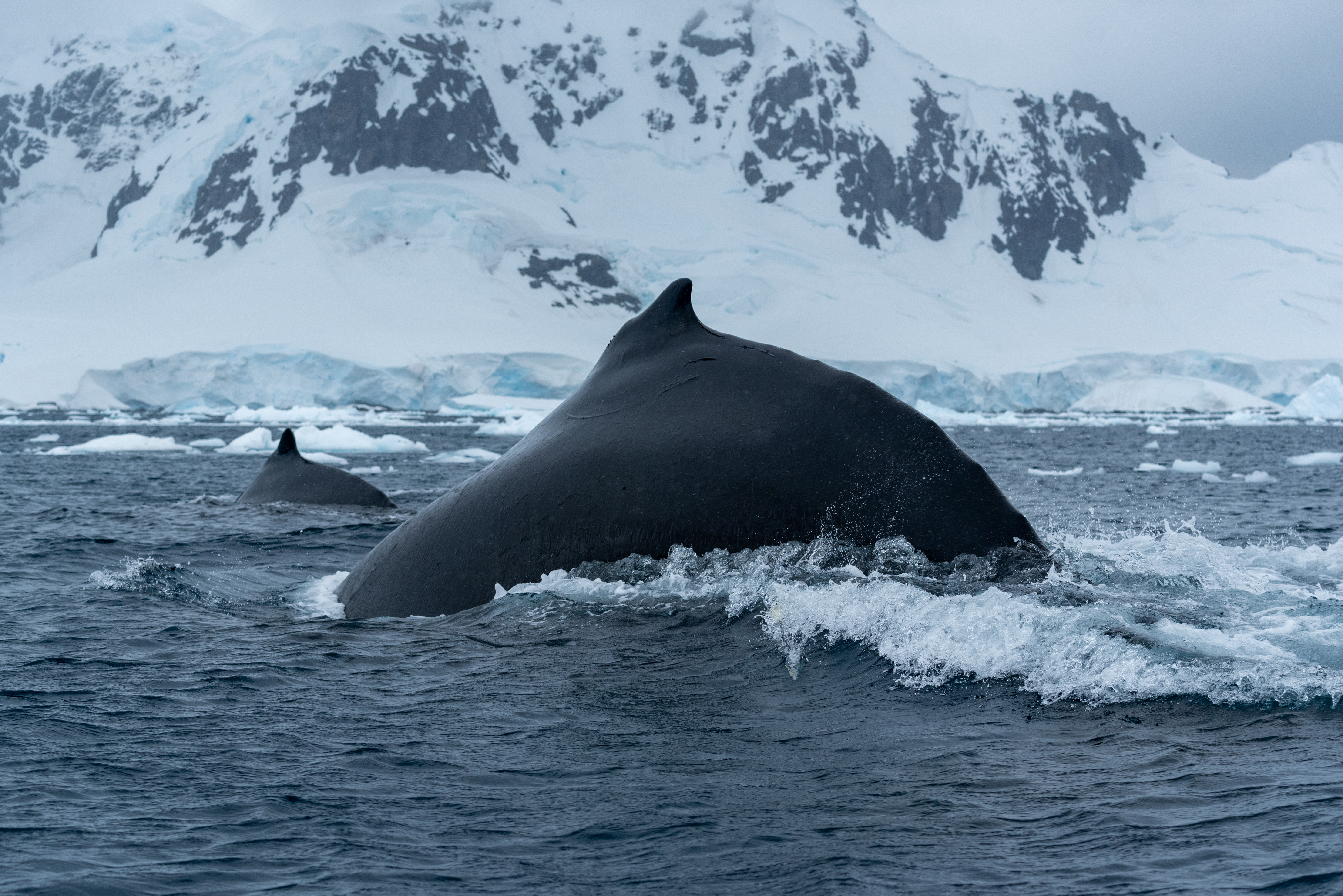
I'm sitting on the bluffs overlooking Santa Barbara’s Devereaux Beach on a sun-bleached autumn afternoon with fellow Bren School graduate student Anastasia Kunz, when she gasps and points in the distance. I glance up just in time to see the dolphins as one leaps into the air and lands with a smooth splash. It’s an idyllic scene, as the azure water shimmers beneath us and clouds hang low over Santa Cruz island in the distance. The landscape looks surreal.
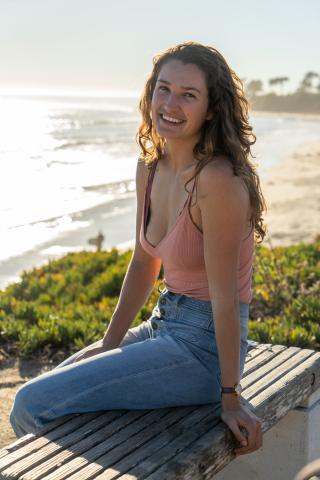
“I’ve always considered seeing dolphins to be good luck," says Anastasia.
It’s midterms week and this busy graduate student—who is pursuing a dual focus in conservation planning and coastal marine resources management—has carved some time out of her busy schedule to talk about ocean conservation. It’s a fitting scene for such a chat: overlooking the Channel Islands National Marine Sanctuary, with Channel Islands National Park in the distance. Below us on the beach, surfers dart in and out of the water with their surfboards and take advantage of the tail end of one of the first big swells of the year.
It’s a conversation that would have looked a lot different just one year ago when Anastasia and I were attending graduate school virtually. Likely from home, likely on Zoom, likely with a Google Doc transcript of my notes—but certainly not in front of the ocean, inspiring each thread of conversation with a renewed vigor to protect “all of this,” as Anastasia often puts it, gesturing at the brown pelicans, marine mammals, and students all enjoying their local marine protected area. For students like her, going to school virtually highlights just how important it is to connect with the places you’re working so hard to protect.
Originally from Santa Barbara, Anastasia grew up with a close connection to and a deep love for the ocean. Her friends spent their summers hiking and hanging on the beach, and she often found herself playing beach volleyball at East Beach, a popular downtown hangout, in what became a Saturday ritual: wake up early, play some 2-on-2, go for a dip in the ocean, hit the farmer’s market, and get on with her day. This became the background rhythm to her life—so much so, that she didn’t realize how much she loved the coast until she moved away.
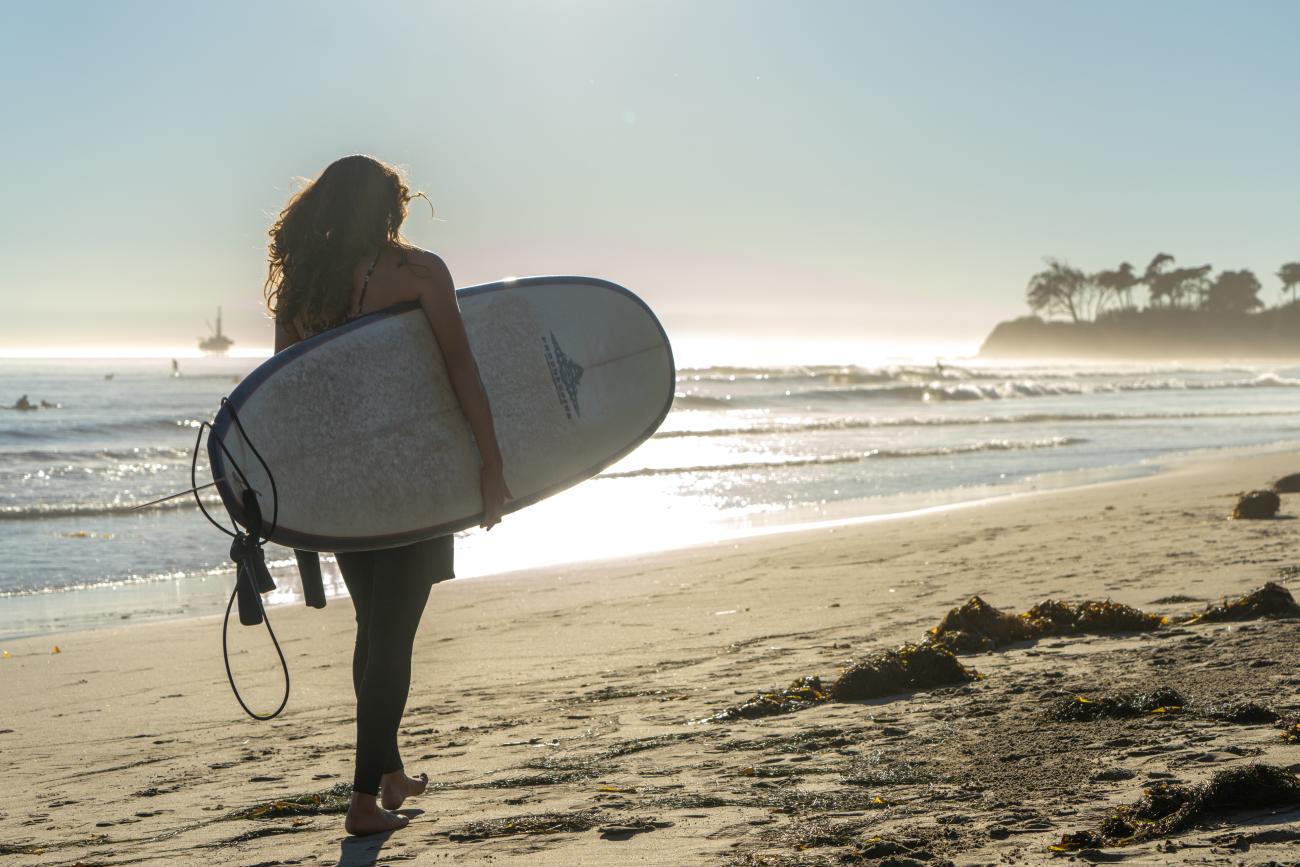
After graduating from UCLA, Anastasia spent a year and a half in Colorado as a project lead with NASA’s DEVELOP program, a sort of short-term fellowship for young graduates eager to apply NASA’s vast trove of satellite and monitoring data to help solve environmental problems. While this experience gave her significant insight into the power of remote sensing tools—one project had her using satellite data to create indices for detecting habits vulnerable to invasive species in Nevada and Oregon—her daily routine in the mountains differed from that in Santa Barbara.
Though she still managed to hit the farmer’s market when she had time, she found herself hiking, skiing, and playing disc golf instead of swimming in the ocean and playing beach volleyball. This made her realize just how much she missed the blue waters of the Pacific Ocean and the gentle swaying of palm trees when Santa Barbara’s evening sundowner winds kicked up.
Given that the ocean inspired Anastasia to pursue a career in environmental science, her next choice was straightforward: attend UC Santa Barbara’s Bren School, which sits on a bluff overlooking the waters that she grew to know and love. Bren focuses on applied problem-solving skills, and in lieu of a thesis, has students partner with an organization to work on a year-long group project. She was eager to use her remote sensing and environmental modeling background to help save her ocean, but the next step was a bit more difficult: finding a marine-based organization in need of this skillset. Soon enough, Anastasia would find this opportunity in the NOAA Sanctuary Soundscape Monitoring Project through her project work at Bren.
Lindsey Peavey Reeves and the Sanctuary Soundscape Monitoring Project
Dr. Lindsey Peavey Reeves is a research ecologist who works in NOAA’s Office of Marine Sanctuaries Conservation Science Division, just a few buildings down from the Bren School. She always wanted to be a marine biologist, and began her career working with small environmental non-profits helping to save her first love, sea turtles, which she says “are the ultimate ambassador for marine conservation.”
However, a diverse range of experiences in the field piqued her interest in marine mammals. Spending time at sea means you’ll inevitably see whales, and Lindsey became fascinated with the natural history of these large vertebrates on research trips off the coast of New England. Yet it was on a trip to Wilhelmina Bay in Antarctica that she had one of her most memorable marine mammal experiences.
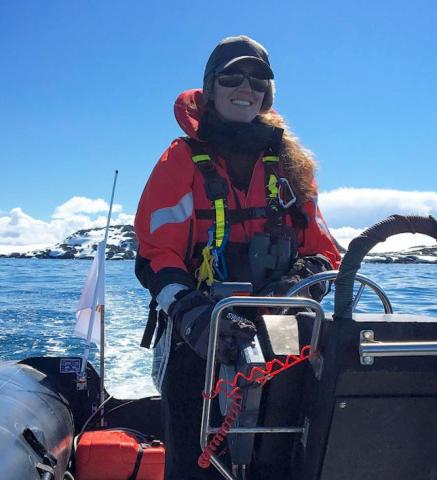
“In the Southern Ocean, there are protected bays where you can tuck up near some of the mountains and large icebergs, protected from the wind,” she says. “When you turn off the motor, it’s one of the most insane silences I’ve ever experienced. When a humpback whale or a minke whale or a killer whale surfaces right next to you—it’s the smallest I’ve ever felt in my life. I’m truly just a bystander, feeling the power of such a large mammal. I’ve never been able to replicate the silence I felt.”
After completing her PhD at the Bren School, Lindsey landed a prestigious Sea Grant Fellowship and eventually a job running the Sanctuary Soundscape Monitoring Project in Santa Barbara—just a few doors down from where she completed her doctorate. The goal of this project is to use remote sensing technologies to establish a baseline understanding of sound levels in the Channel Islands National Marine Sanctuary (CINMS)—the same one from which Kunz draws her inspiration—and identify any abnormalities that could stress the animals in this ecosystem, including whales.
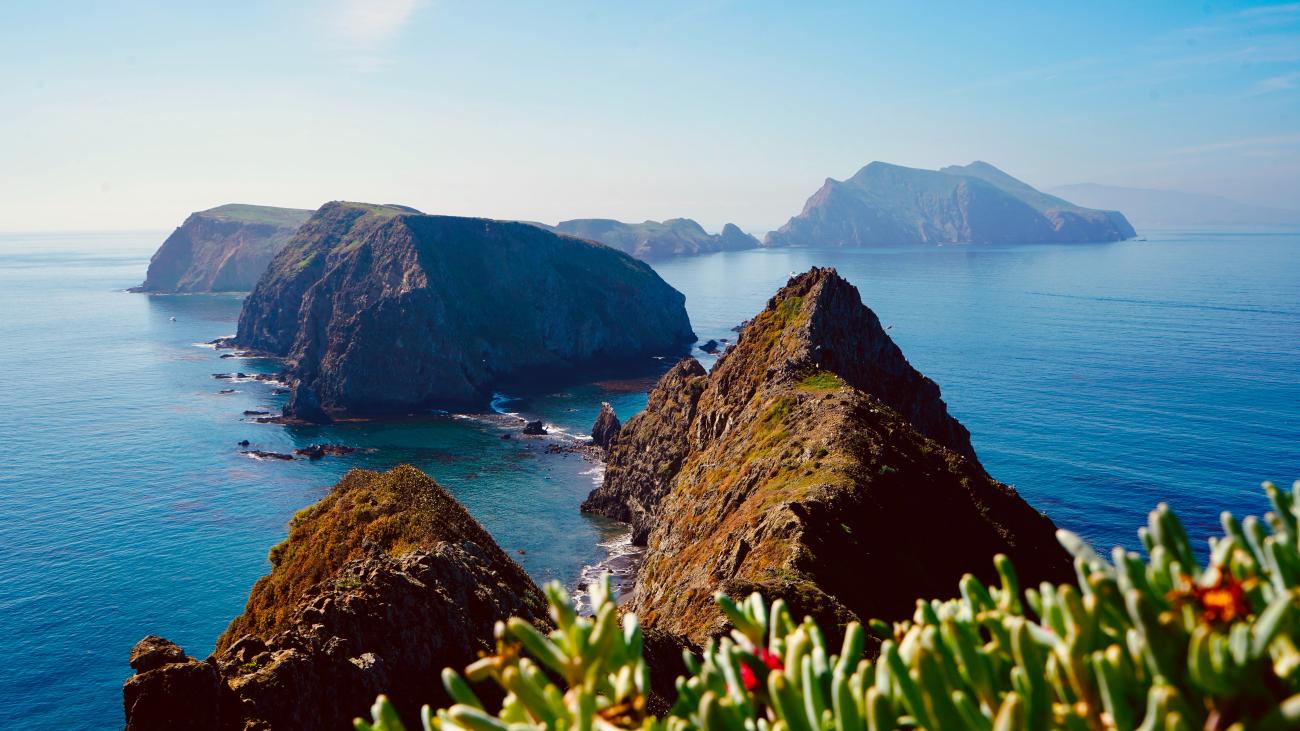
Santa Barbara is a noisy place to be a marine mammal
Unlike Antarctica’s Wilhelmina Bay, the ocean off Santa Barbara can be a noisy place for both humans and animals. The whine of giant diesel engines from recreational and commercial ship traffic, the din of pile drivers working on construction projects, and high-frequency pingers used to locate schools of fish create a cacophony of sounds heard all over the Channel Islands National Marine Sanctuary and beyond.
However, Lindsey stresses that noise isn’t always a disturbance. "Just because a soundscape is loud doesn’t necessarily make it bad,” she says. “Some of the loudest ecosystems in the area are rocky reefs and a lot of organisms are used to these soundscapes.”
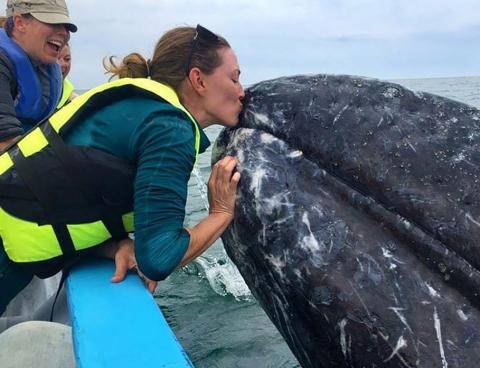
Yet Lindsey and her collaborators aren’t searching for naturally loud ecosystems; they’re hoping to spot seasonal and annual variations in otherwise quiet places and identify problematic abnormalities. In other words, they’re searching for human activities that degrade acoustic habitats and impact marine animals’ ability to thrive.
These thriving marine mammals use sound in complex ways. Killer whales, the ocean’s top predator, use echolocation to communicate within their pods and navigate during thousand-mile migrations, while humpback whales are well-known for their long, regionally distinct songs.
A simple tool, called a hydrophone, can listen to these underwater sounds, while a slightly fancier hydrophone can chart them on a graph, which looks similar to that produced by a seismometer measuring the strength of an earthquake. These tools can help visualize the sounds in a particular environment—and help researchers make sense of a soundscape.
Remote sensing can measure seal bomb usage
In a soundscape like that found in the Channel Islands National Marine Sanctuary, human disturbances such as ship traffic are just a normal part of the background chatter. Less understood is the use of “seal bombs,” which are small, explosive charges that fishers use to deter sea lions from competing for their catch.
These seal bombs are “used to non-lethally deter nuisance animals,” says Lindsey.
Often used in the squid fishery, seal bombs are legal as long as the fisher has a firearms license and the proper permits; they can be a helpful way of warning off pesky pinnipeds. More importantly, sea lions can inadvertently get caught in a fishing line or net, and the last thing that fishers want to deal with is a panicked, several hundred-pound marine mammal thrashing around with their haul. Seal bombs help ensure this won’t happen.
Over the past few years, organizations monitoring the soundscape project, including the National Marine Fisheries Service and researchers from the Scripps Institution of Oceanography, have detected hundreds to thousands of these seal bombs each night (squid fishers typically fish beginning at sundown and shine bright spotlights at the surface of the water to attract their catch). Seal bombs create a sound with a loud, distinct signature: picture an earthquake registering on a seismometer—the steady rhythm of the pen suddenly and rapidly racing up and down the page—and you’ll have an idea of how a seal bomb registers on a hydrophone.
“That isn’t really what managers intended for the use of that deterrent,” says Lindsey. “Not only were managers becoming concerned, but so was the general public.”
Forming a Bren team to help identify seal bomb usage
Despite being affiliated with institutions located just a few buildings away from each other, Anastasia first met Lindsey Peavey Reeves in the spring of 2021 on a Zoom call. They hit it off right away, and together crafted a plan for Anastasia to spearhead a group project that would help Lindsey answer a burning question: how do the signatures created by seal bombs fit into the soundscape of the Channel Islands National Marine Sanctuary?
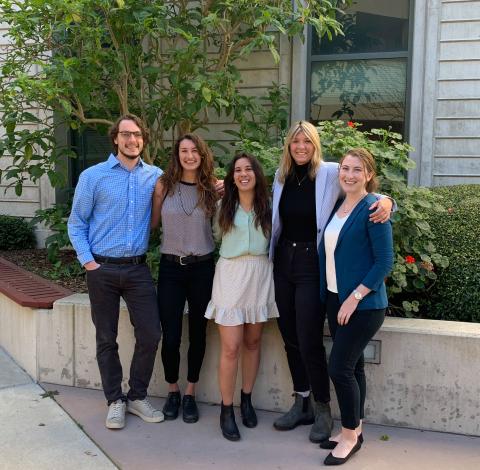
One of the more popular proposals vetted during the Master's Group Project selection process, she was able to put together a powerhouse team, including Ian Brunjes, a former software developer turned environmental data science wizard; Taylor Lockmann, who studied environmental science at UCSB; Caitlin Manley, a Ventura native with a background working for the National Park Service and the California Department of Fish and Wildlife; and Jenna Wisniewski, who has a degree in natural resources and conservation from the University of Hawaii.
Yet this core group of aspiring marine scientists faced a difficult challenge: they all came to Santa Barbara because they loved the ocean and sought inspiration from studying, working, and learning every day on a building overlooking a marine reserve. But COVID-19 and the lockdown meant that they spent all of their time inside, in Zoom meetings, instead of overlooking the Channel Islands National Marine Sanctuary from their school building, Bren Hall.
Learn more about the Master's Group Project work performed by these students, titled: Spatial and Temporal Dynamics of Seal Bomb Use in Channel Islands and Monterey Bay National Marine Sanctuaries: Acoustic Impacts on Cetaceans and Recommendations for Fisheries.
Jenna Wisniewski came to Bren to save the ocean
Jenna Wisniewski spent the first 18 years of her life in Evergreen, Colorado, skiing and hiking in the Front Range. However, when it came time to go to college she knew she wanted to explore a new place, far from where she grew up. Studying marine science at the University of Hawaii seemed like a natural next step, and she spent the next four years island-hopping, free-diving, and nurturing a love for protecting the ocean.
After a short stint back at home working for the Colorado Department of Parks and Wildlife, she knew she wanted to return to the ocean. Santa Barbara seemed like the closest place to Hawaii on the continental U.S., so she came to the Bren School—the only graduate program to which she applied.
Yet despite the opportunity to attend graduate school during a time when much of the country was struggling to stay afloat, COVID-19 restrictions meant that her first year wasn’t quite as she envisioned; attending daily 8am classes while cooped up in a small, on-campus dorm room shared with three other students wasn’t exactly her idea of “Hawaii on the mainland." Surfing helped—it was an opportunity to get in the ocean and connect with the place she was trying to save—but it was no match for the inspiration that comes from going to school with all of your classmates in a building overlooking the ocean you’ve come to protect.
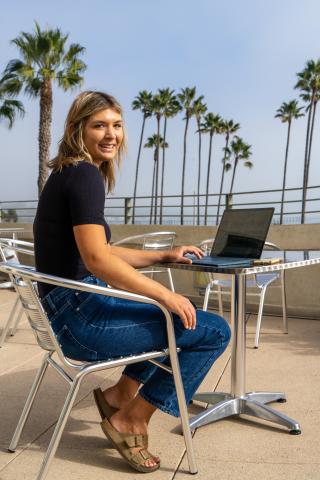
Here we are looking at the Channel Islands National Marine Sanctuary from school. If we wait long enough, we might see whales, dolphins, and our study subjects.
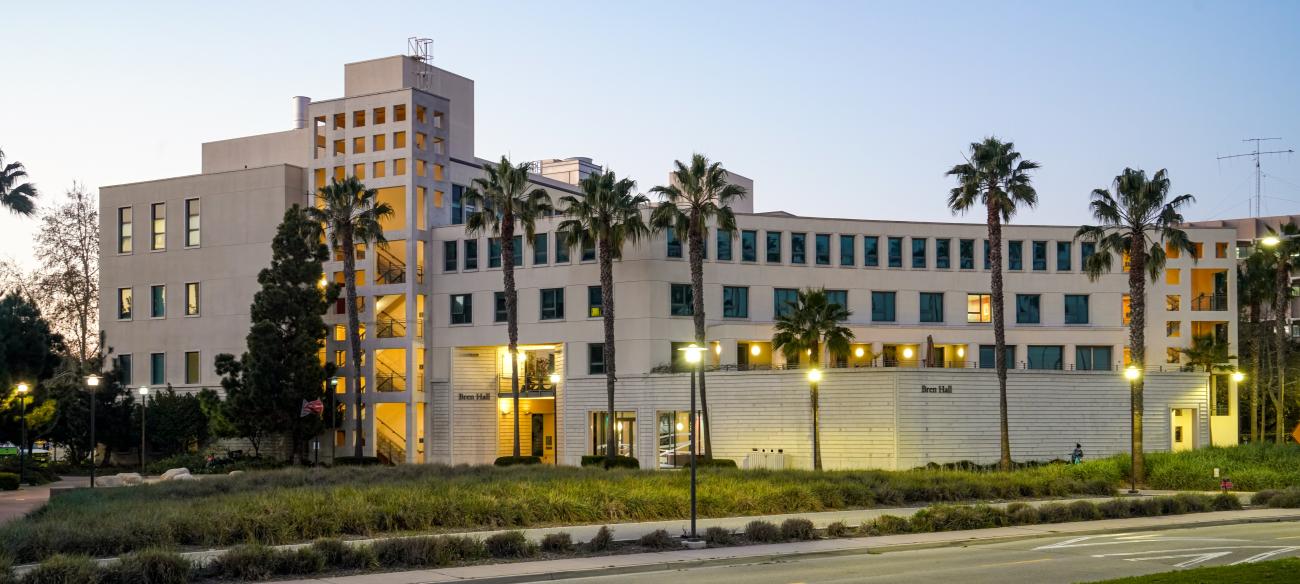
Remote sensing in a time of remote instruction
Both Anastasia and Jenna had come to the Bren School because they had a personal connection with the environment and wanted to save it, but they found themselves disconnected from that inspiration during one of the more stressful periods of their professional lives.
Along with the rest of their cohort, they spent the first year of their two-year program living in the same city but attending school at home, on their computers. The blur of lectures, career strategizing, and socializing so typically of the modern graduate school experience happened not in stately auditoriums, on outdoor patios, at and beach bonfires, but on Zoom, Google Docs, and Slack.
It wasn’t until September 2021, that Anastasia, Jenna, and the rest of the team were finally able to return to Bren Hall and pursue graduate studies in marine science—a welcome relief from logging in to Zoom day after day.
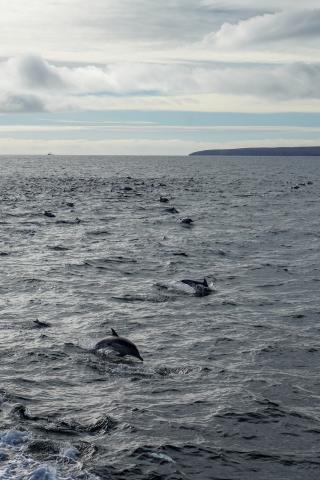
“Here we are,” Jenna gestures as we sit on Bren’s second-floor deck, “looking at the Channel Islands National Marine Sanctuary from school. If we wait long enough, we might see whales, dolphins, and our study subjects.”
Yet as appealing as it is to go to school in a place where you can spot dolphins while eating lunch, the real perks of attending school in person, with your classmates, are more mundane. Analyzing the “earthquake” acoustic signatures of seal bombs requires sifting through reams of data, which means painstakingly wrangling and analyzing thousands of lines of code. The big picture of the project is sexy; the day-to-day analysis is less so.
“When you’re working over Zoom, it’s difficult to comprehend just how much data you’re working with, and what study area the data is coming from,” Jenna said. “But when we’re all here in person, sitting around the same computer and looking at the same ArcGIS map, it gives us all a much higher level of understanding of the problem we’re trying to solve.”
That problem includes describing the dynamics of seal bomb usage. Wisniewski and the others want to know if their use is limited to the squid fishery, and if so, what environmental factors determine where the squid, which pinnipeds prey upon, are located. The group’s geospatial analyses have attempted to analyze these dynamics over time and identify how much noise is generated by seal bombs.
Only then can they seek to answer the ultimate question: how might these sounds be impacting other marine mammals, which, Lindsey notes, “can be sensitive to explosions, particularly if they are chronic.”
Virtual collaboration has its perks
While Anastasia and the rest of the team are thrilled to be attending school in person, their year of online schooling has made them adept at virtual project management, allowing them to collaborate across both space and time. Virtual collaboration “can be useful when working with so many agencies,” says Caitlin Manley, the Ventura native. “It’s the way of the future.”
The far-reaching nature of the problem that the group is trying to solve has drawn the interest of many such agencies, and the team has found themselves collaborating with NOAA, Scripps, The Monterey Bay Aquarium Research Institute (MBARI), the California Department of Fish and Wildlife (CDFW), and Google—organizations and individuals that are spread across the state. Recently, the group has found themselves frequently meeting with them to coordinate their research efforts.
“Every meeting someone brings up another question,” says Caitlin. “It adds another layer to the analysis and teaches us more about the biology and ecology of the Sanctuary.”
While working with data-driven organizations can provide deeper insight into spatial modeling techniques and help these marine scientists better understand the impacts that seal bombs have on the surrounding marine environment, virtual collaboration and remote sensing technologies are no match for getting out in the field and talking to the people who deal with these issues first-hand: the squid fishers themselves.
Difficult conversations are best conducted face-to-face
One morning during their fall quarter, Caitlin and Jenna made the half-hour drive from Santa Barbara to Ventura Harbor, from which most local squid fishers depart. This stretch of Highway 101 runs along the coast and affords the passenger a front-row seat to the local surf, the Channel Islands, and if they’re lucky, a whale spout or two.
They had come to chat with a 40-year veteran of the fishing industry whose family has been in the business for generations. Seal bombs can be a delicate subject, and they were unsure as to how best raise the issue with someone who looked like the “godfather of fishing.”
They opted to play it cool, patience that was rewarded when the fisher mentioned seal bombs before either of them could raise the issue. Ultimately, he appreciated their interest in his profession, as well as their curiosity and desire to learn more about the seal bombs. It was a conversation best had in person—not over a Zoom call, where good intentions and subtle nuances can easily be misinterpreted, particularly when you’re working on a project that could threaten the livelihood of the person you’re speaking with.
“This project is walking a fine line,” says Caitlin, “especially when you talk to people who are so invested in our findings. But in the end, we’re just trying to make recommendations that can lower seal bomb usage and put them in areas that won’t be as harmful to marine life. We’re not here to regulate them.”
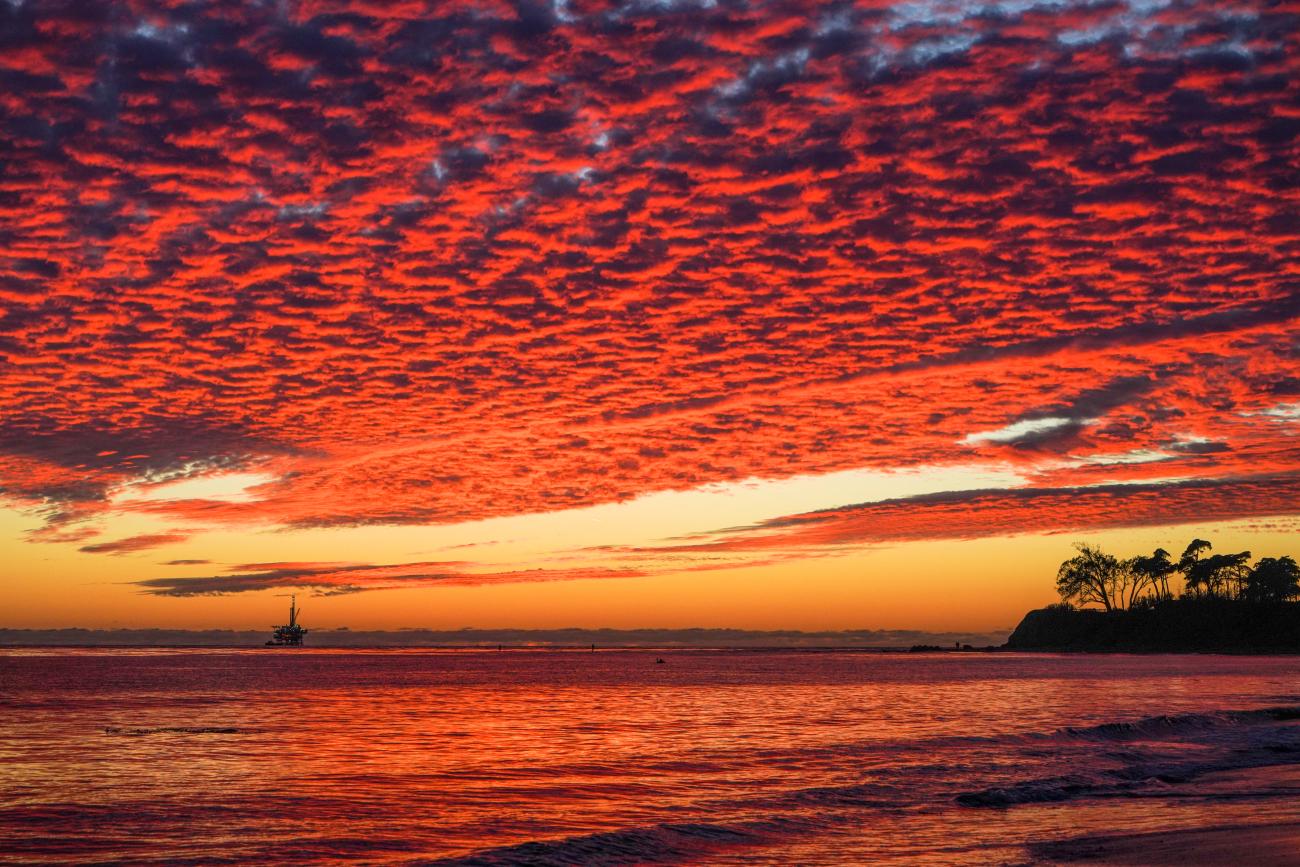
What will the future bring?
The seal bomb Master's Group Project team has their work cut out for them. During their second year, student project deliverables are due in spring quarter, when teams begin wrapping up their analysis and finalizing their recommendations. Anastasia, Jenna, Caitlin, Ian, and Taylor and hope to provide Sanctuary managers with a better understanding of where and when these seal bombs are being used, which will help Lindsey and others determine whether or not these noises are negatively affecting whales and other marine mammals.
Yet the Bren group is optimistic about finishing up this project and beginning the next phase of their professional careers: finding a job helping to save the ocean. Most of them hope to land positions in marine science that allow them to be closely connected with the places, species, or ecosystem that keeps them inspired as they pursue careers in ocean conservation.
Lindsey hopes to get the rest of the Bren team out on a research vessel to help retrieve data from one of the five hydrophones floating in the Sanctuary, something Anastasia was lucky enough to do over the summer.
“I’d love to get the team out on the boats,” says Lindsey. “We’ve got big plans for the coming year."
About the author
Matt Koller (MESM '22) is a writer and photographer currently based in Santa Barbara, California. Before coming to Bren, he worked as a whale-watching guide in Maui, a naturalist photography guide exploring the glaciers of Southeast Alaska, and a photographer in the mountains of Colorado. Matt is a firm believer that the quickest way to fall in love with the natural world is to spend time exploring it, and spends most of his free time surfing, hiking, biking, skiing, and dancing in the outdoors.

